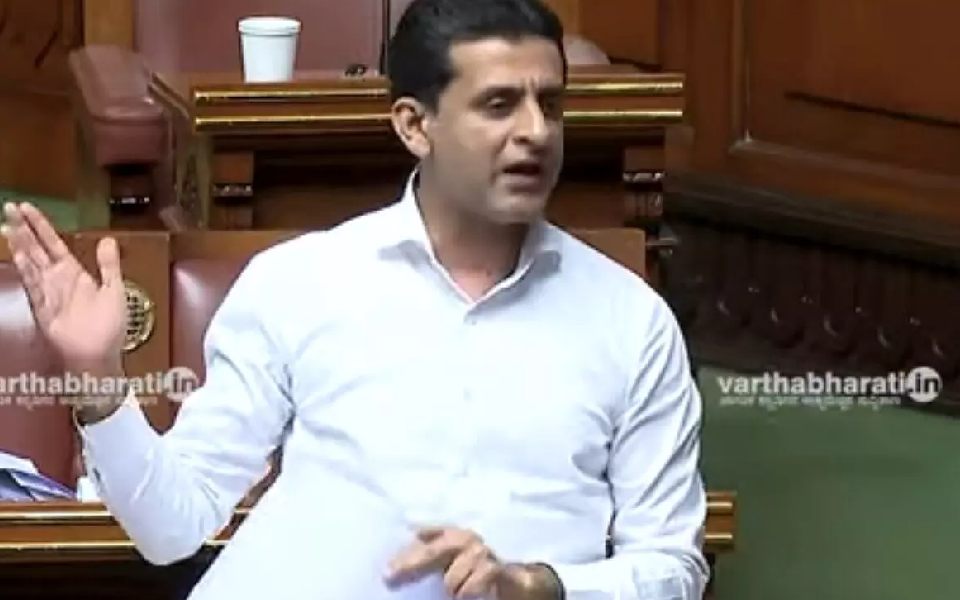Lucknow/Hathras: Scores of people held a meeting Sunday outside the house of a former BJP MLA in Hathras where they defended the accused in the alleged gangrape of a Dalit woman who later died and demanded registration of an FIR against her family members.
The heavy police force was deployed in the vicinity of the residence of former BJP MLA Rajvir Singh Pehalvan, located around 8-9 kilometers from the victim's village.
One of the organizers of the meeting and Pehalvan's son Manveer Singh denied that the gathering comprised members from the upper castes and said they were from different sections of society.
We welcome the CBI inquiry ordered by the Uttar Pradesh chief minister. We have faith in the investigation, Singh told PTI while claiming that the victim's family members were changing their stand.
The entire scenario has been created to blame the government. The accused persons are in favor of any type of inquiry. But the victims are changing their stand every now and then. They do not want a narco test or a CBI probe. Now they want other kinds of inquiries, he claimed.
He said an FIR should be registered by police against the complainants in the case. "Our demand is that a case should be filed against those people who had filed the case in the first instance," he said.
The 19-year-old Dalit woman was allegedly raped by four upper-caste men in Hathras on September 14. She died on September 29 at Delhi's Safdarjung Hospital where she had been brought for treatment.
On Sunday, Singh also said various legal options were being explored to defend the accused in the case. He asserted that the arrest of some of the accused persons from their homes was proof of their innocence.
Had they been guilty, they would have run away from their homes. Why would they be present in their homes, he said.
He also alleged that the Congress and the Samajwadi Party were trying to influence the victim's family as they wanted to the issue to linger on.
The meeting assumes significance as it was held a day after Congress leaders Rahul Gandhi and Priyanka Gandhi Vadra visited the victim's house and met her family members at a village in Hathras district, and the recommendation of a CBI probe by UP chief minister Yogi Adityanath.
The victim was cremated in the dead of the night near her home on Wednesday. Her family alleged that they were forced by the local police to hurriedly conduct her last rites. Local police officers, however, had said the cremation was carried out "as per the wishes of the family".
Let the Truth be known. If you read VB and like VB, please be a VB Supporter and Help us deliver the Truth to one and all.
Bengaluru: Rizwan Arshad, MLA and head of the Select Legislative Committee that reviewed the Greater Bengaluru Governance Bill, stated that the governor’s action does not signify a rejection of the Bill but rather a request for specific clarifications.
Speaking to The New Indian Express, Arshad downplayed the concerns, especially those surrounding the 74th Amendment, and said, “No exact point of the Act was raised.” He dismissed claims of constitutional flaws in the Bill.
Addressing concerns about the proposed Metropolitan Planning concept, first introduced by the Congress government, Arshad assured that the committee would take the issue seriously. “Metropolitan Planning was proposed when Congress was in power. We will consider all aspects of it moving forward,” he said, noting that the committee remains open to making refinements to the Bill.
One of the most contentious issues has been the proposal to split the Bruhat Bengaluru Mahanagara Palike (BBMP), with critics fearing it could follow the path of the Delhi civic body’s trifurcation, added the report.
However, Arshad remained confident, stating, “Delhi civic body’s trifurcation failed due to unequal revenue distribution. In contrast, we’ve carefully accounted for that, ensuring a balanced approach for Bengaluru’s future. Bengaluru has to be divided for administrative efficiency, and we have taken all objections into consideration.”
Reaffirming that the governor’s request for clarifications was not a setback for the state government, Arshad concluded, “We’re fully prepared to provide all clarifications. There is no cause for alarm.”





